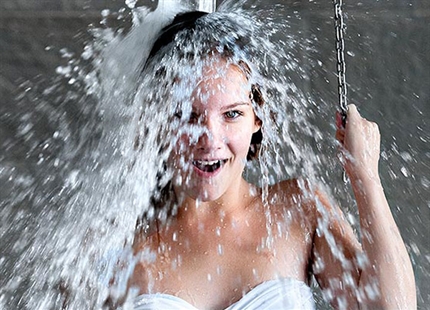
Author: Steve Ellis, Area Sales Manager, Condair plc
Healthcare humidity matters
Sensitive babies, coagulation, expensive electrical equipment, electrostatic shocks and stress are just some of the reasons why it is essential to maintain the correct humidity in hospital environments.
This is especially true in the winter months when heating systems are turned on, as this can dramatically dry the air causing atmospheric moisture levels to drop as low as 15-20% relative humidity (%rH). The Humidity Group of the HEVAC Association recommends that a healthy level is between 40-60%rH. Levels below this can be harmful in normal working environments, causing breathing problems, headaches, sore throats and increasing staff absenteeism through stress. However, in hospital environments the effects are much more severe.
Low relative humidity in the atmosphere of an operating theatre will cause the air to draw moisture from all possible sources in the room - including any body tissue exposed during operations. This can cause premature drying and promote the formation of a scab from coagulated blood during operations. By maintaining an optimum humidity of between 50-60%rH, drying of body tissue is prevented.
Perhaps more important in theatre is the effect of electrostatic shocks which build up below 40%rH. The uncomfortable, surprising jolts caused by a sudden ‘static discharge can have potentially damaging and dangerous effects on surgery, and consideration must also be given to the prevention of electrostatic sparks in relation to flammable anaesthetic gases.

Young babies are also extremely susceptible to dry air...
As well as causing discomfort and hazards to people, the low humidity levels that increase electrostatic build-up pose a real threat to electrical equipment. Radiology departments contain very sensitive and expensive equipment that can be easily damaged by static sparks. By maintaining humidity levels of above 45%rH, static build-up can be eliminated.
Young babies are also extremely susceptible to dry air. Membranes in the throat and nose can very easily dry out when the humidity drops below 45%rH. For this reason, humidity levels in maternity and obstetric departments should be maintained at 45-65%rH. For many adults with respiratory problems, low rH can exacerbate their condition as mucosae lose moisture to the environment.
In fact, there are very few areas in hospital that do not benefit from humidification. The problem can often be a compromise between those areas that need it (ironically, directives govern rH levels for laboratory animals but not for the rest of a hospital), and the running costs of humidifiers in a sector where budgets are always tight.
Moisture can be introduced to the atmosphere of an air handling system by either releasing a fine mist of cold water or steam, both of which are absorbed by the airflow. Hospital environments require absolute sterility so it is important to ensure any system has failsafe hygiene features. Steam is a very popular solution in hospitals as it ensures the moisture being introduced is 100% safe and also due to the fact that there is often a ready supply of steam being used for sterilising purposes.

...there are very few areas in a hospital that no not benefit from humidification.
However site steam is not always “clean steam”, as it may contain additives that make it unsuitable for steam humidification. Condair has systems that will take “process steam” and produce clean sterile steam at atmospheric pressure, making steam humidification extremely simple. Electric steam humidifiers have been used in some hospitals but these can prove expensive to run particularly on large fresh air plants feeding operating theatres where the running hours can be quite considerable over a 12 month period.
Some hospitals have explored the option of cold water humidification, including compressed air and water sprays, evaporative systems and in some cases ultrasonic humidifiers. In all of these systems it is imperative that steps are taken to ensure that there is no microbiological risk from the system. These include silver ion, UV water sterilisation and reverse osmosis purification. However, alongside these purification methods it's vital to ensure the system has regular automatic purge and flush cycles to ensure water cannot remain in the system to stagnate.
Humidifier selection is often largely dependent on energy costs. Steam, however it is generated, consumes 0.75kW per kilogram of steam produced. Compressed air and water sprays use about 10% of the power of a steam humidifier and evaporative humidification will typically use less than 1% of the power that a steam humidifier requires. Therefore if steam is not available there are low cost alternatives to having to run expensive steam mains or run large electrical loads to achieve the desired humidity.
Designing a humidification system for a hospital environment is a very detailed process, and each unit should be tailored to the specific installation. Consideration must be given to the design of the air handling system that will carry the moisture, the rate of air flow through the system, the size of the ducts and pipes, and many other factors. This is to ensure 100% absorption of the moisture into the atmosphere of the air handling duct. Even with steam, if this is not achieved and moisture is allowed to condense or gather within a duct, contamination may occur. This can lead to problems of microbiological contamination of the duct work.
Condair is very experienced in designing advanced, cost-effective solutions for hospital humidification problems. For free advice and an informed discussion on your project click here.











